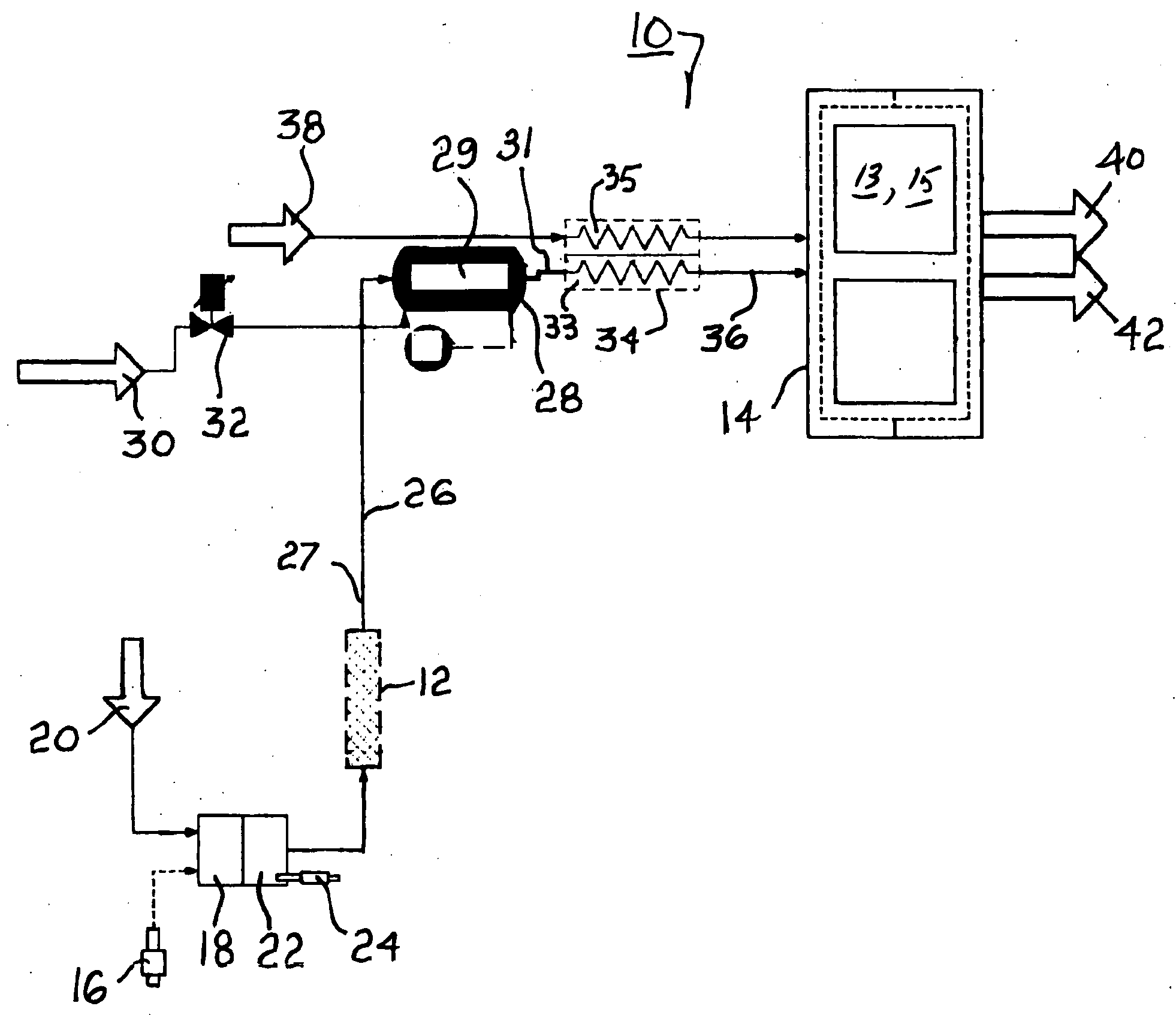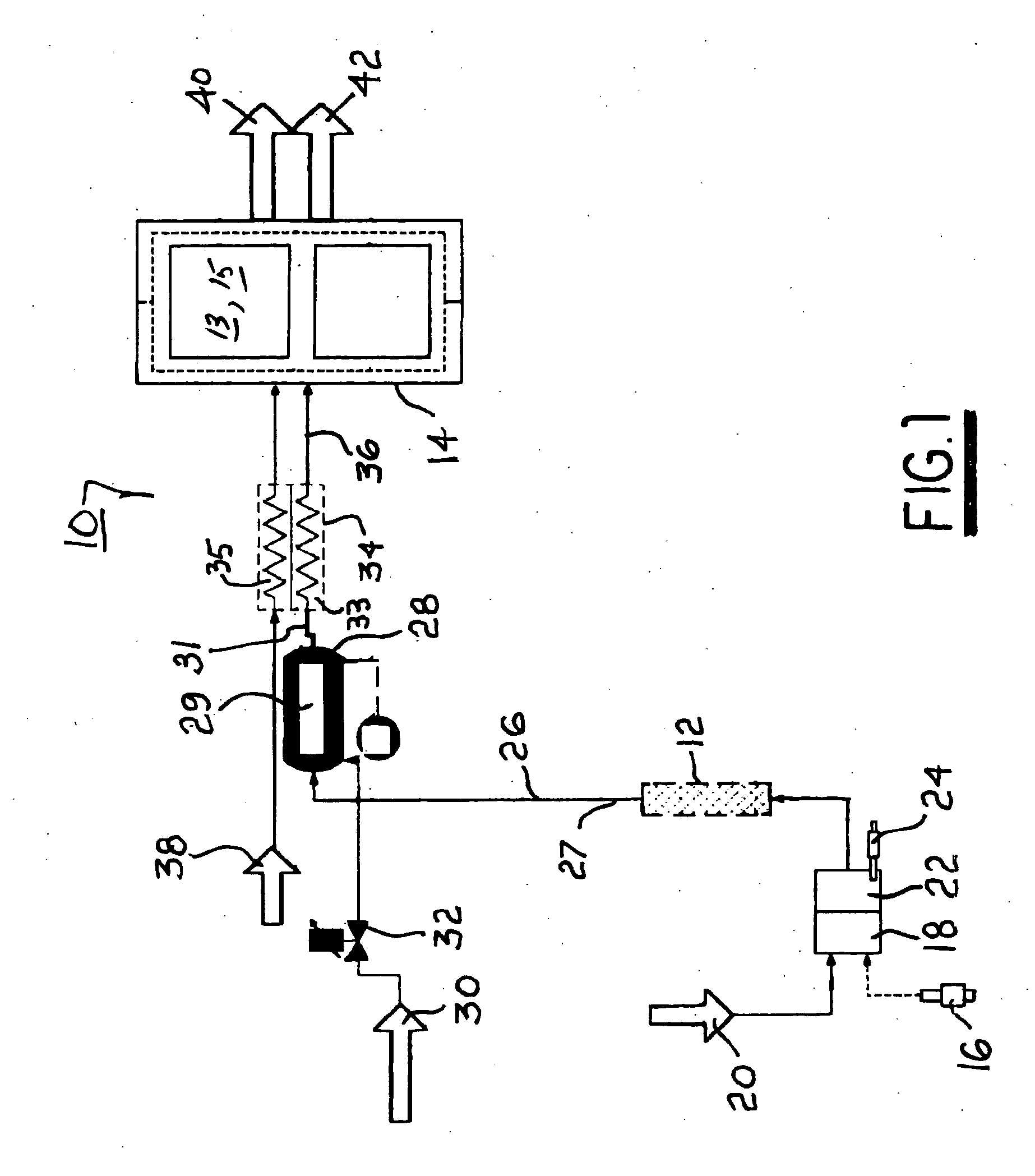Solid-oxide fuel cell system having an upstream reformate combustor
a fuel cell and combustor technology, applied in fuel cells, electrochemical generators, chemistry apparatus and processes, etc., can solve the problems of high undesirable condition, shorten the life of the catalytic elements in the reformer, and directly damage the catalytic elements
- Summary
- Abstract
- Description
- Claims
- Application Information
AI Technical Summary
Benefits of technology
Problems solved by technology
Method used
Image
Examples
Embodiment Construction
[0011] Referring to FIG. 1, a fuel cell system 10 is shown wherein a reformer 12 is thermodynamically decoupled from an SOFC fuel cell stack 14, permitting the reformer and the stack each to run in its own optimal temperature range, thereby inhibiting coking of anodes in the SOFC stack; minimizing thermal degradation of the reformer; increasing efficiency of the stack; and permitting the stack to reach threshold operating temperature more quickly from start-up.
[0012] Hydrocarbon fuel is injected via a fuel injector 16 into a reformer vaporizer 18. Reformer inlet air 20, from an air source such as an air pump (not shown), is also admitted to vaporizer 18 wherein the fuel and air are mixed and the fuel is vaporized. The vaporized fuel is passed through a start-up reformer combustor 22 equipped with an igniter 24 such that the vaporized fuel may be burned in combustor 22 at start-up and the hot, burned gases passed sequentially through reformer 12 and stack 14 to provide immediate hea...
PUM
 Login to View More
Login to View More Abstract
Description
Claims
Application Information
 Login to View More
Login to View More - R&D
- Intellectual Property
- Life Sciences
- Materials
- Tech Scout
- Unparalleled Data Quality
- Higher Quality Content
- 60% Fewer Hallucinations
Browse by: Latest US Patents, China's latest patents, Technical Efficacy Thesaurus, Application Domain, Technology Topic, Popular Technical Reports.
© 2025 PatSnap. All rights reserved.Legal|Privacy policy|Modern Slavery Act Transparency Statement|Sitemap|About US| Contact US: help@patsnap.com


